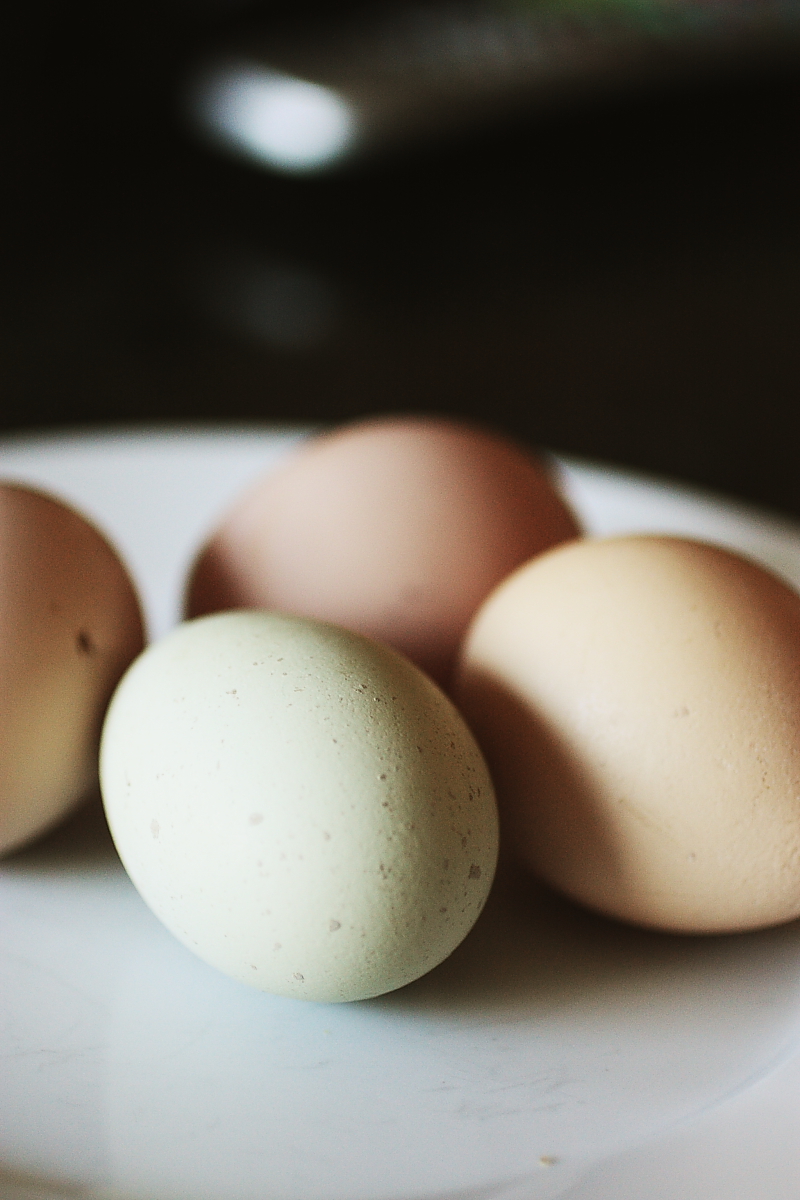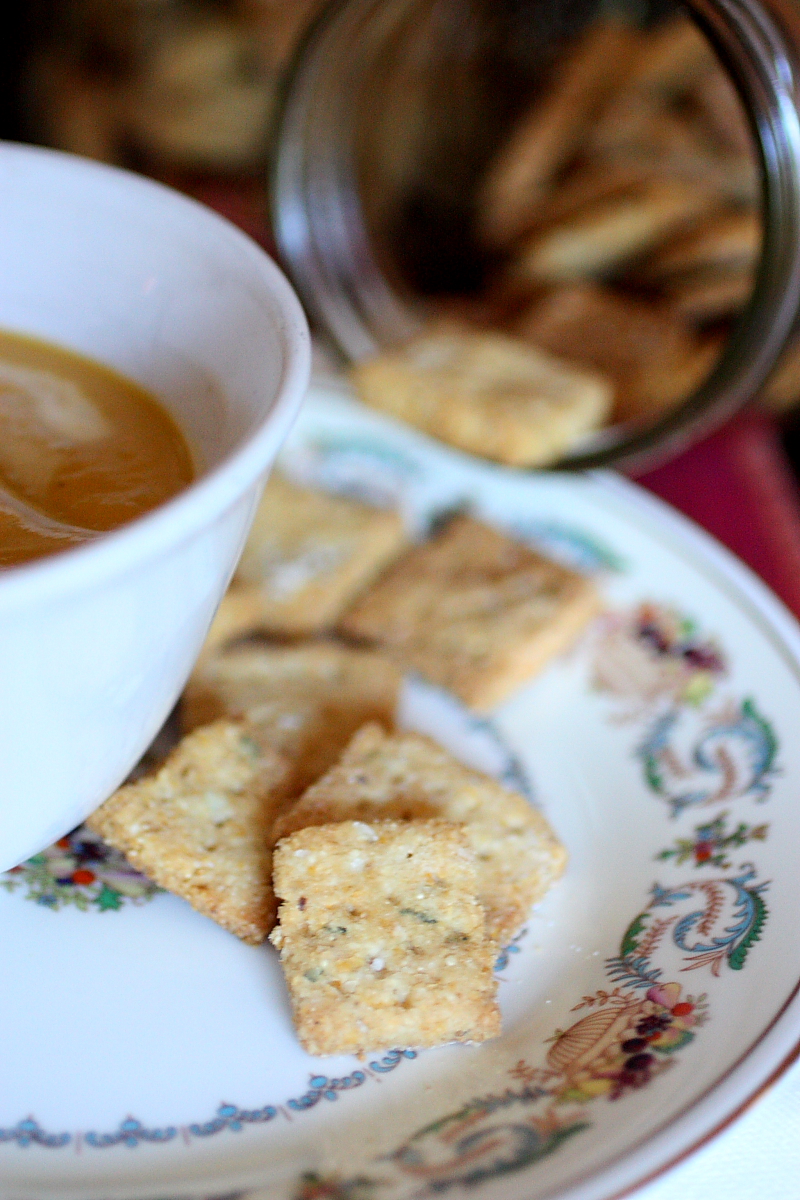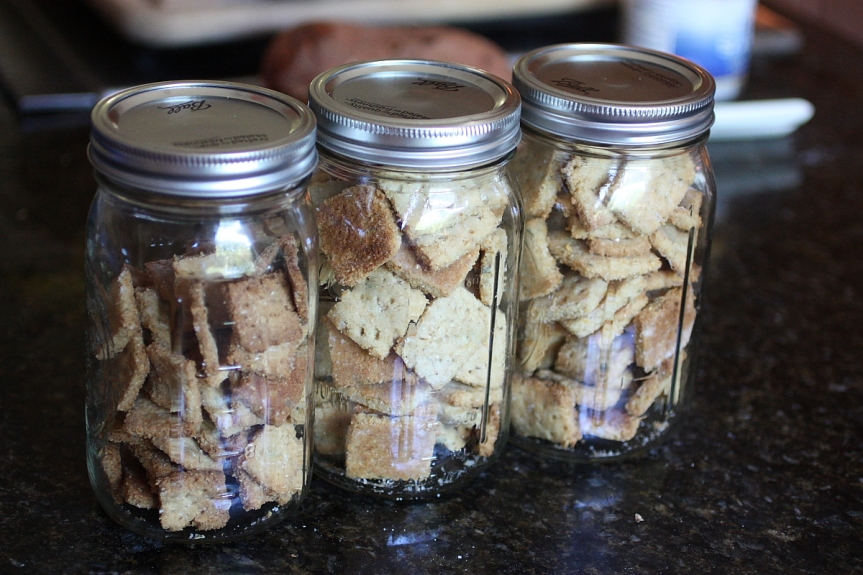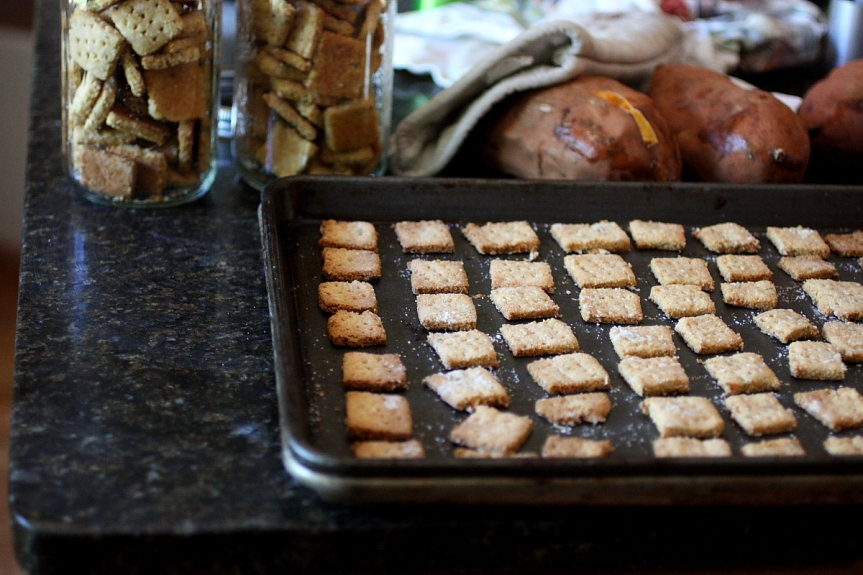Before I get started, I want to give a warm welcome and sincere thank you to any of you who found life, in recipes through Freshly Pressed. I was completely surprised (pleasantly so) when I saw that one of my posts had been featured the other day. I am beyond grateful for all of your thoughtful comments and words of encouragement. If you like what you’ve seen so far, I invite you to keep up with the blog through Facebook, Twitter, or RSS feed. You can also follow me on Pinterest.
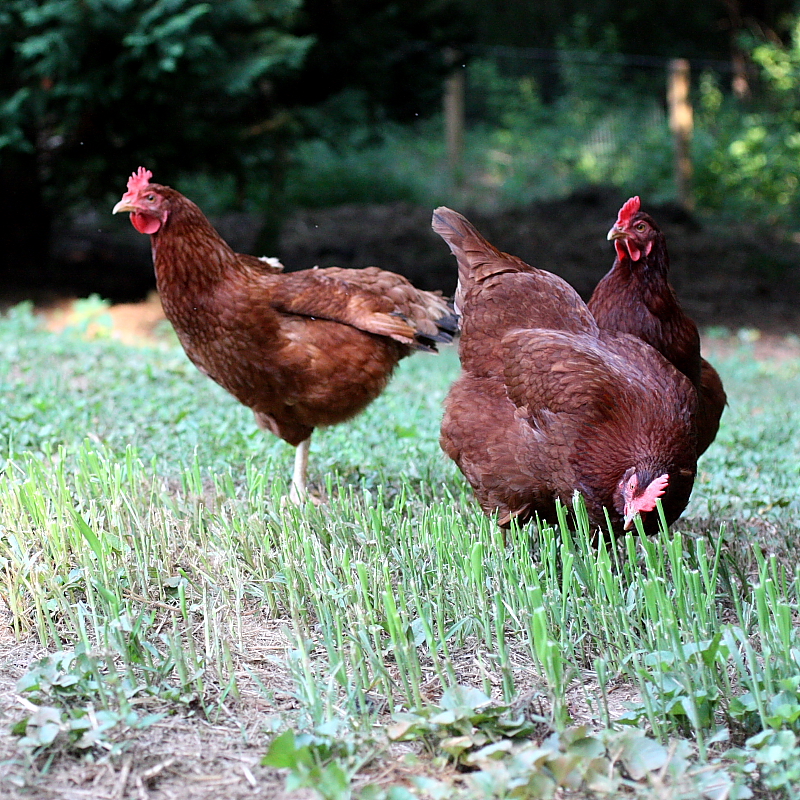 In the spirit of full disclosure, our adventures in backyard poultry rearing have not been without, um, shall we say, challenges. We started back in April with three Rhode Island Reds – Fred, Tweety and Sally. Things seemed great at first – we were getting three eggs a day, the chickens seemed happy (we let them free range during the day, and put them back in the coop at night), and it wasn’t a tremendous amount of work. We made sure they had food, water, and fresh air, and they provided us with a dozen eggs every four days. It seemed almost too good to be true.
In the spirit of full disclosure, our adventures in backyard poultry rearing have not been without, um, shall we say, challenges. We started back in April with three Rhode Island Reds – Fred, Tweety and Sally. Things seemed great at first – we were getting three eggs a day, the chickens seemed happy (we let them free range during the day, and put them back in the coop at night), and it wasn’t a tremendous amount of work. We made sure they had food, water, and fresh air, and they provided us with a dozen eggs every four days. It seemed almost too good to be true.
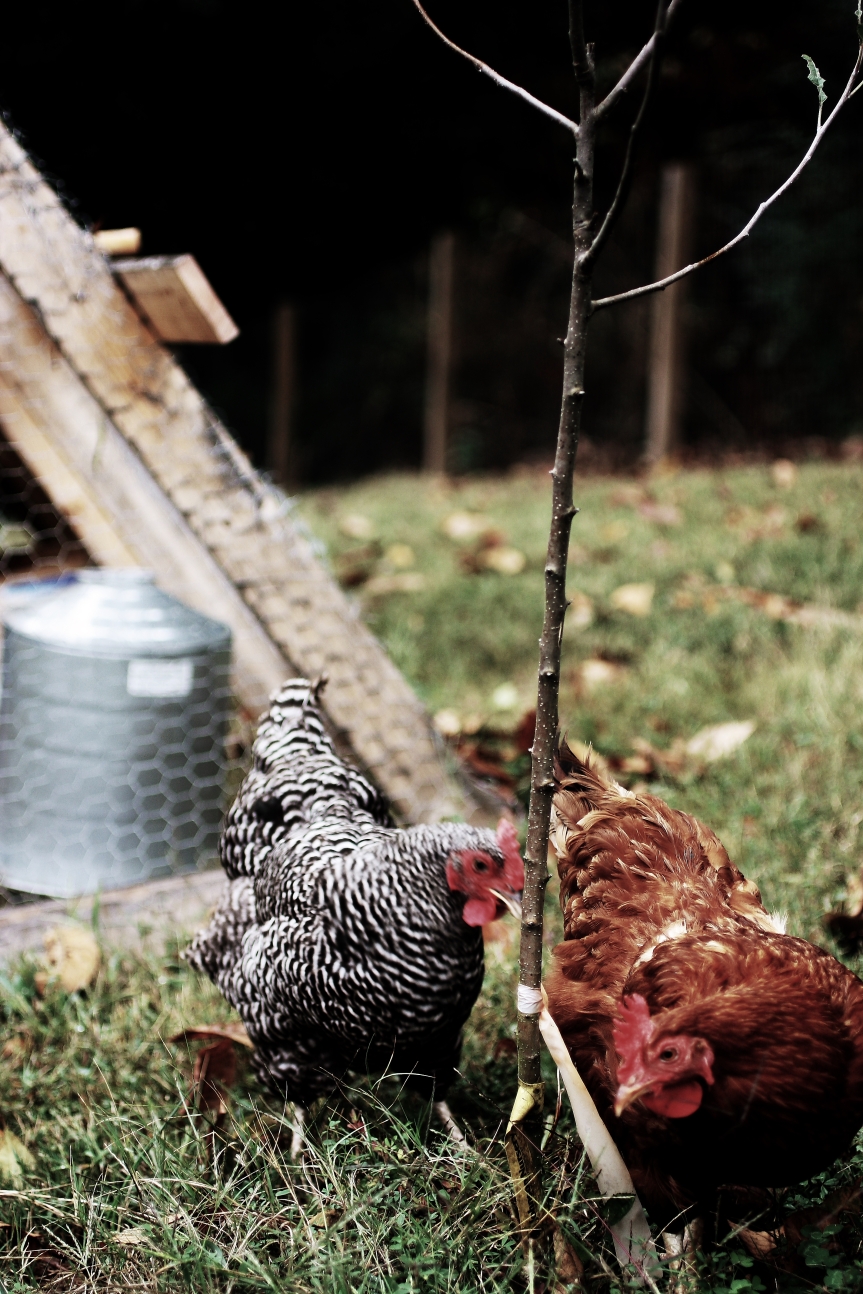 And that’s because it was. We lost Fred in August to what we believe was a black widow spider bite, and we lost Tweety in October to a predator of some sort or another. We didn’t want Sally to be lonely, so we found her four new friends – Spot and Dot, two lovely black and white Barred Rock hens, and Fred, Jr. and Tweety, Jr., a couple of Ameraucanas. We promised to keep them safe, well fed and watered, in exchange for eggs. We were looking forward to four or five eggs a day, perhaps enough to share with our friends and neighbors. This was in November.
And that’s because it was. We lost Fred in August to what we believe was a black widow spider bite, and we lost Tweety in October to a predator of some sort or another. We didn’t want Sally to be lonely, so we found her four new friends – Spot and Dot, two lovely black and white Barred Rock hens, and Fred, Jr. and Tweety, Jr., a couple of Ameraucanas. We promised to keep them safe, well fed and watered, in exchange for eggs. We were looking forward to four or five eggs a day, perhaps enough to share with our friends and neighbors. This was in November.
At first, Sally wasn’t terribly keen on her new coop-mates. In particular, she decided that Tweety, Jr. was her nemesis. Every time that poor hen would get close to Sally, she would peck at her and pull her tail feathers out. Tweety, Jr. became scared to leave the corner by the nesting boxes – she would huddle there, trembling, trying to make herself as small as possible. Sally was like the schoolyard bully, exerting her dominance over the new kid on the block. I’m not sure what it was about poor Tweety, Jr. (maybe it was her name), but after a while Sally left her completely devoid of tail feathers.
In addition to this little pecking-order drama, the egg production was not what we’d hoped it would be. For a while, it was only Sally laying. Then occasionally one of the Rocks would lay – either Spot or Dot. We know it wasn’t an Ameraucana because all of the eggs were of the brownish variety – Ameraucana eggs are greenish blue (part of the reason we chose the breed). From late October to late January, there was nary a green egg to be had. We’d been told that the hens were 8 months old when we got them, so they should have been of prime laying age. Had we been swindled? Were these gals completely infertile? Was the trauma being inflicted upon them by that bully Sally too much to handle? We weren’t sure. What we did know was that they were eating an awful lot of feed and not producing anything in return.
Over time, the drama subsided, and Tweety Jr.’s tail feathers began to fill in again. Both Rocks began laying regularly, and things seemed to be on a more even keel in the hen house. When the weather began to get cold (for those two days back in January) we decided we need to put a heat lamp in the coop to keep the water from freezing overnight. The light seemed to make things even better – the egg production from Sally, Spot and Dot increased. Tweety, Jr. and Fred, Jr., though? Not so much.
My mother and my husband have “joked” on more than one occasion about sending the Ameraucana’s to the stew pot. I chose to ignore them.
The other day I went out to the coop, as I do in the afternoon, and I lifted the door to the nesting boxes. There, nestled in the straw, were four eggs. Three brown and one green (!).
The (theoretical) trip to the stew pot has been stayed.
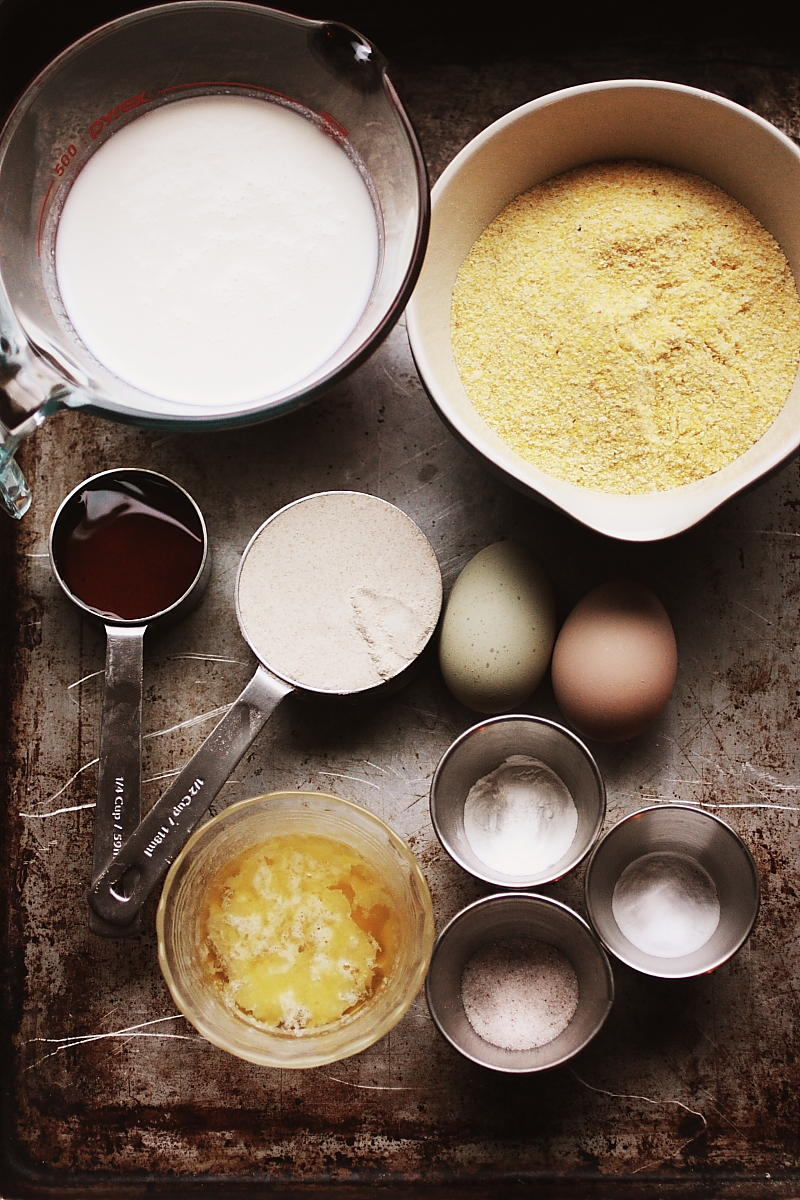 This morning I used that beautiful green egg in some cornmeal pancakes I’ve been wanting to tell you about. I made them for the first time a couple of weeks ago, and I’ve been thinking about them ever since. I make whole-grain pancakes all the time – usually a mixture of rolled oats and freshly ground wheat – but this is the first time I’ve really delved into the cornmeal variety. I think it’s because I’ve been getting all of this lovely freshly ground meal from Rockin’ S Farms – I really want to showcase it. The sweetness of the corn lends itself really nicely to a pancake application. Together with some local raw honey, cultured buttermilk, and those coveted eggs from our backyard flock, they make for a delightful breakfast.
This morning I used that beautiful green egg in some cornmeal pancakes I’ve been wanting to tell you about. I made them for the first time a couple of weeks ago, and I’ve been thinking about them ever since. I make whole-grain pancakes all the time – usually a mixture of rolled oats and freshly ground wheat – but this is the first time I’ve really delved into the cornmeal variety. I think it’s because I’ve been getting all of this lovely freshly ground meal from Rockin’ S Farms – I really want to showcase it. The sweetness of the corn lends itself really nicely to a pancake application. Together with some local raw honey, cultured buttermilk, and those coveted eggs from our backyard flock, they make for a delightful breakfast. 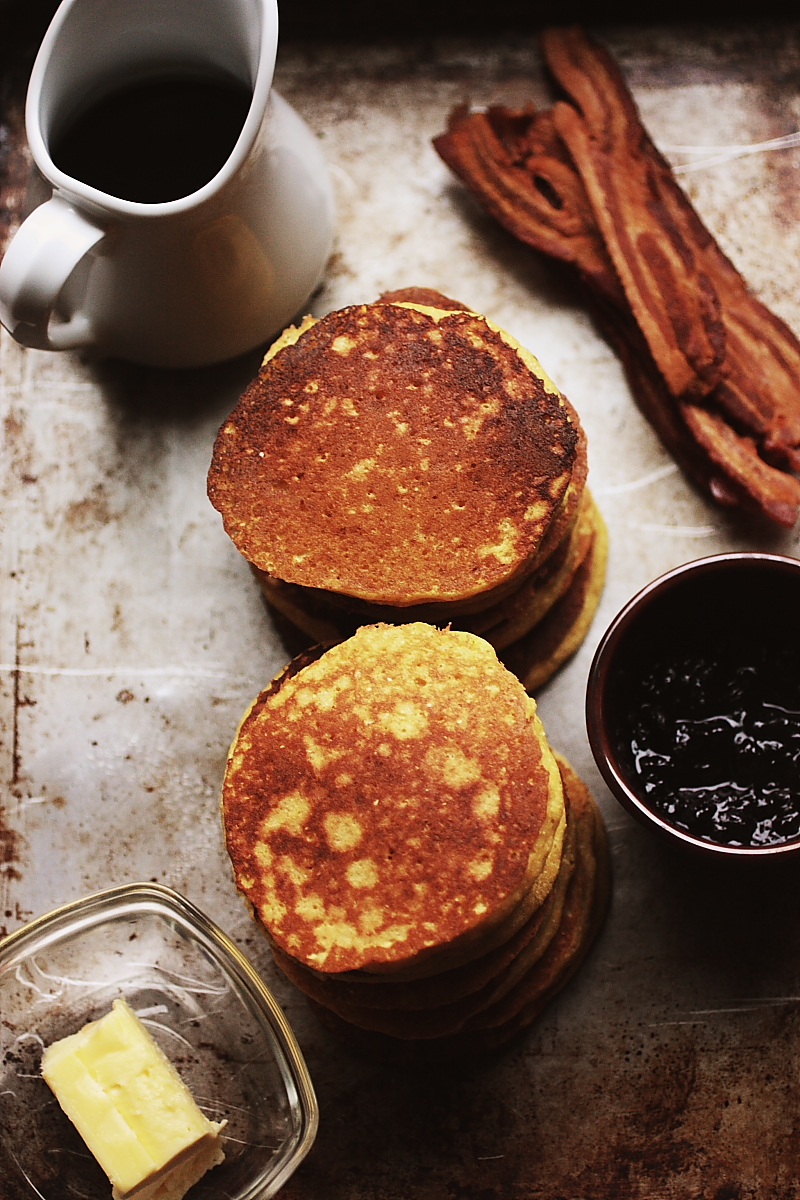
Honey, Buttermilk and Cornmeal Pancakes
prep time: 5 minutes
cook time: 20 minutes
yields: 16 4-inch pancakesIngredients
- 1 1/2 cups cornmeal
- 1/2 cup whole-wheat flour
- 1 1/2 teaspoons baking powder
- 1/4 teaspoon baking soda
- 3/4 teaspoon salt
- 1 2/3 cups buttermilk
- 1/4 cup honey (I’ve also used molasses here, for a deeper flavor)
- 2 eggs
- 3 Tablespoons melted butter
In a large bowl, whisk together the dry ingredients
- In a separate bowl, whisk together the buttermilk, honey, eggs and melted butter
- Add the wet ingredients to the dry ingredients and stir to combine. Do not overmix.
- Ladle by quarter-cupfuls onto a hot griddle. Allow to brown on the first side before flipping to the second side.
- Serve warm with warm maple syrup, honey or fruit compote (I used some warm blueberry jam).
- Enjoy!

